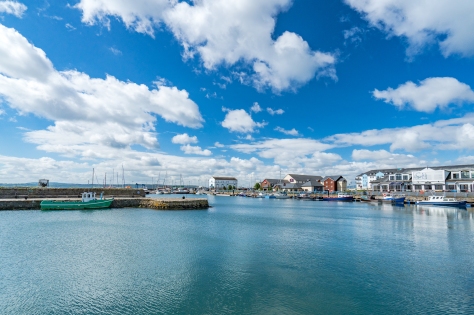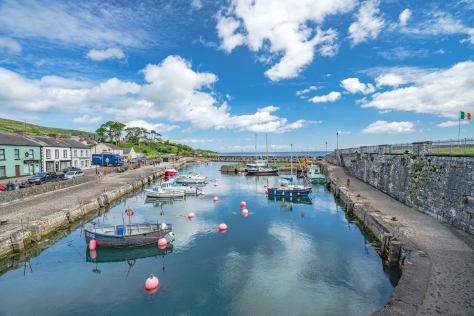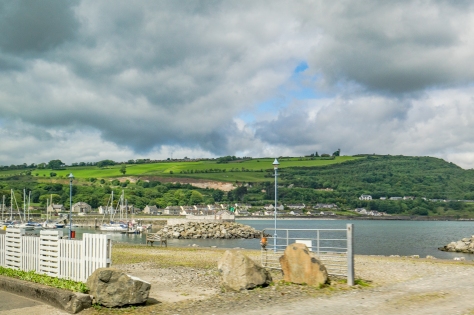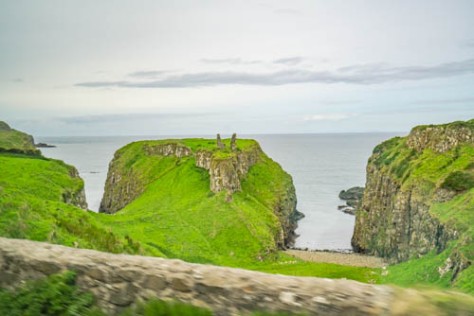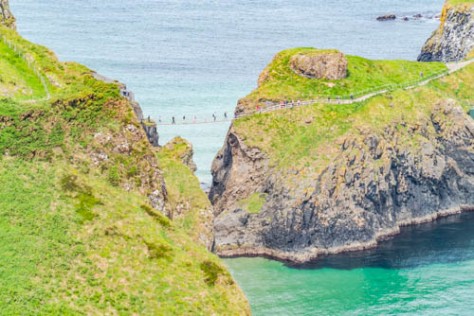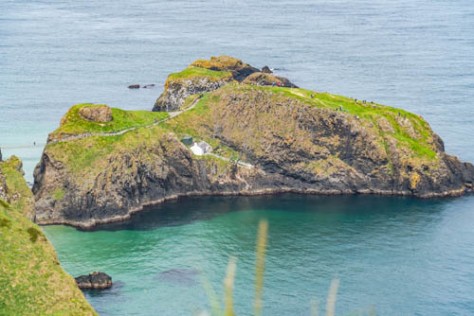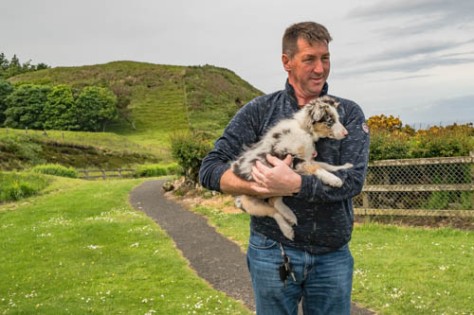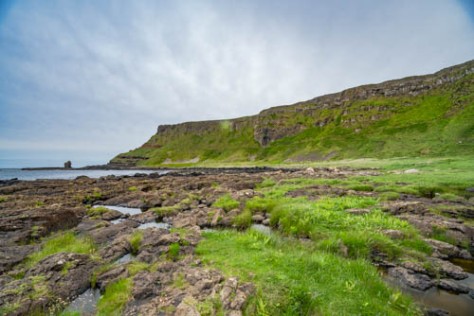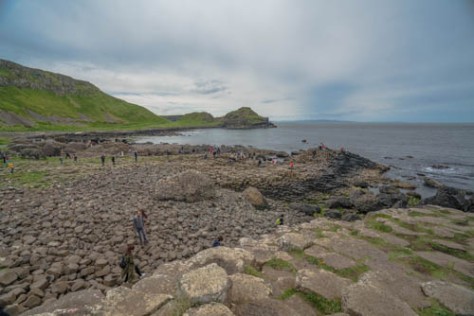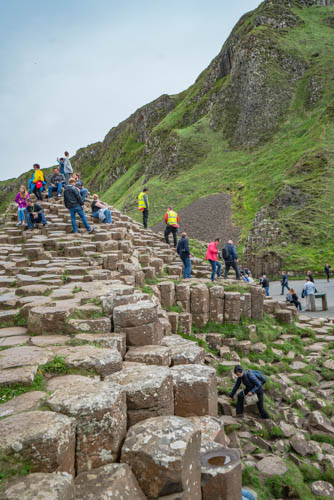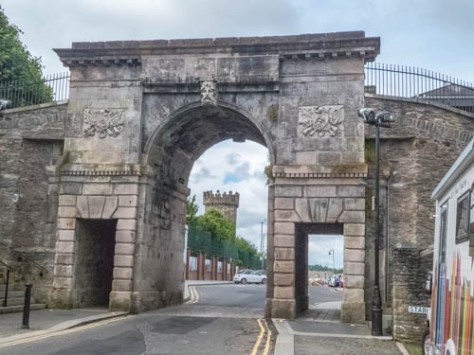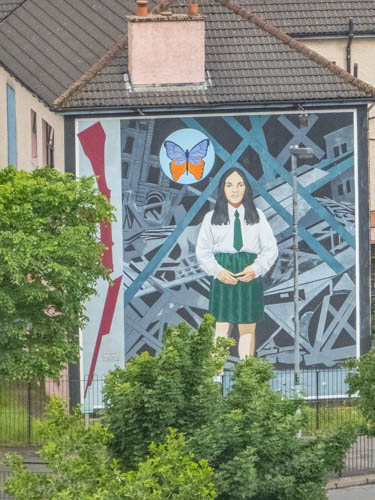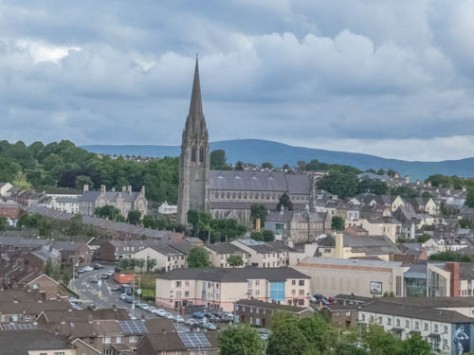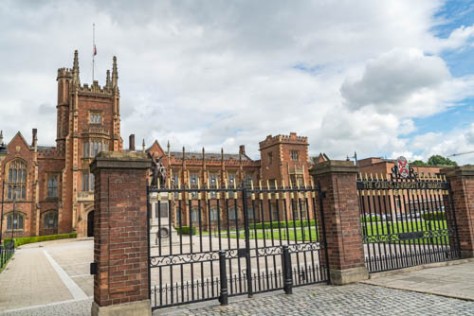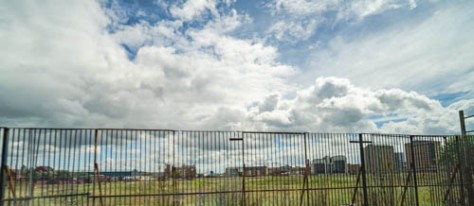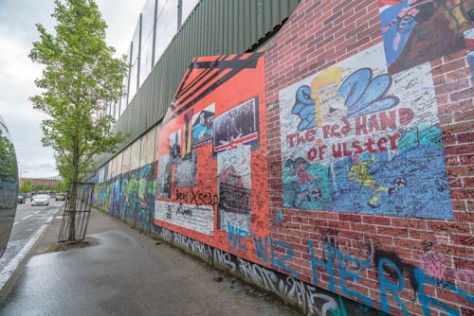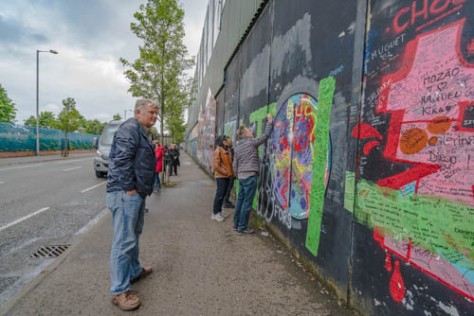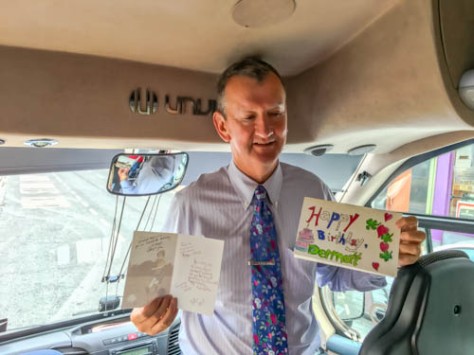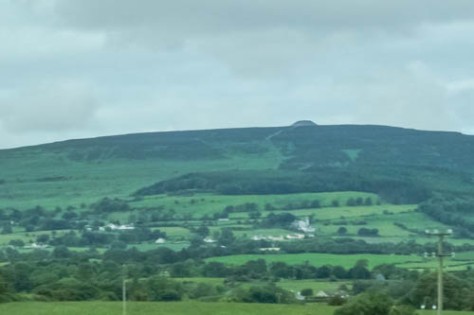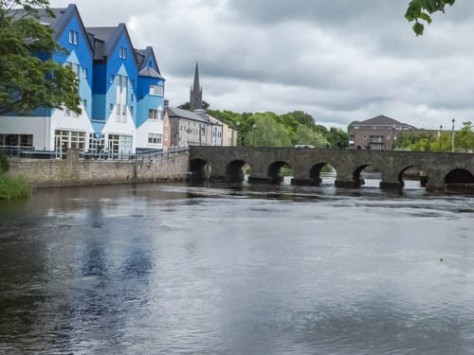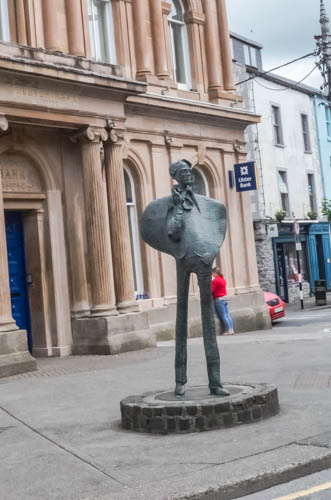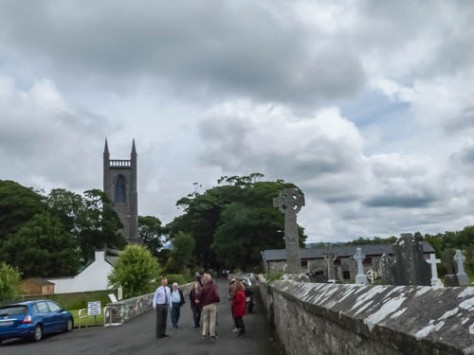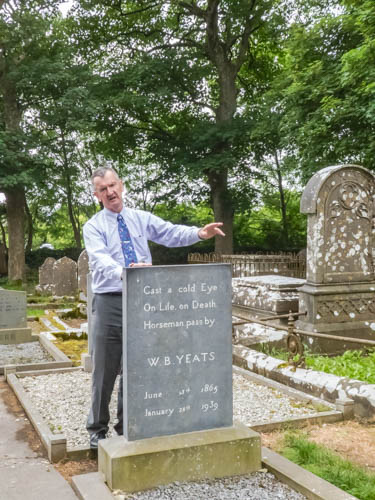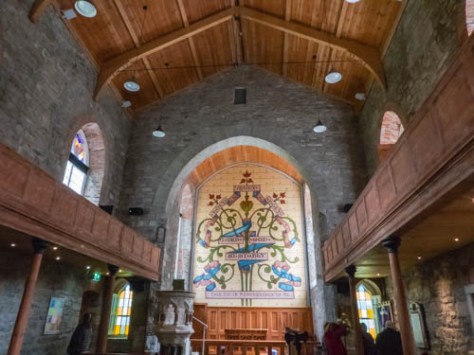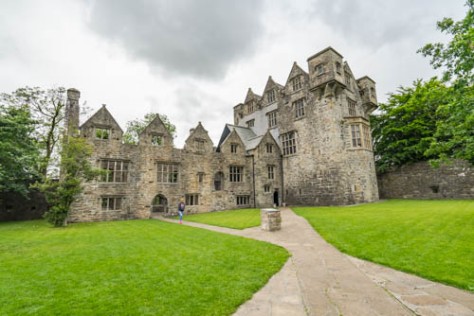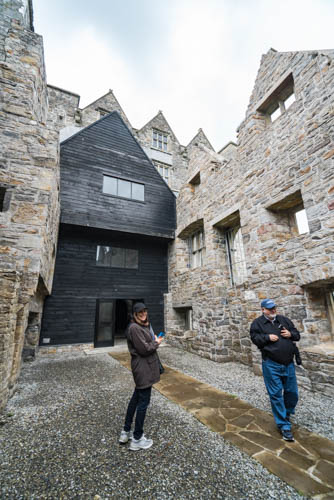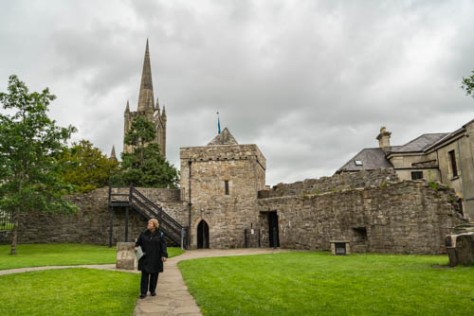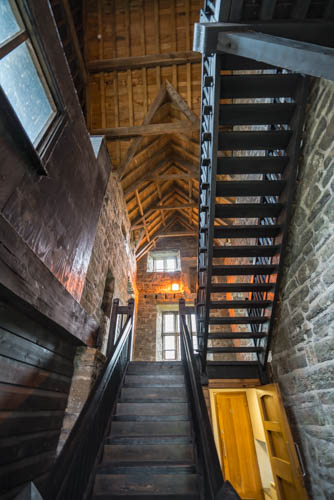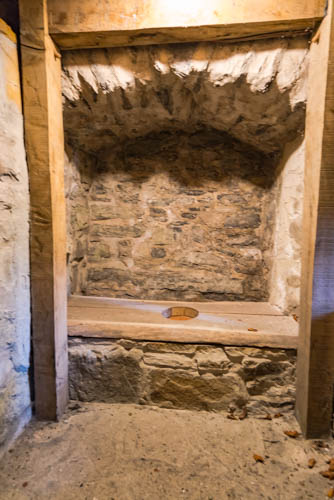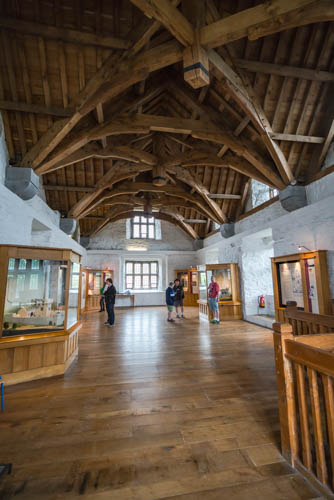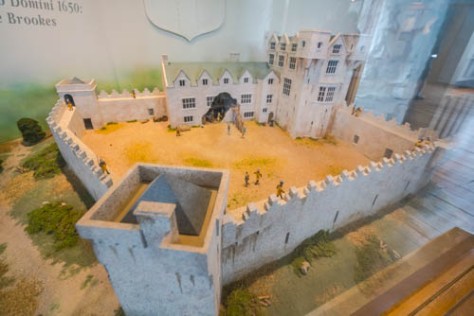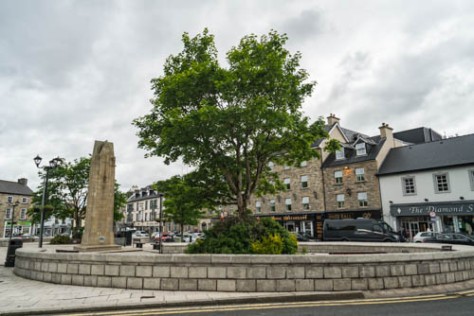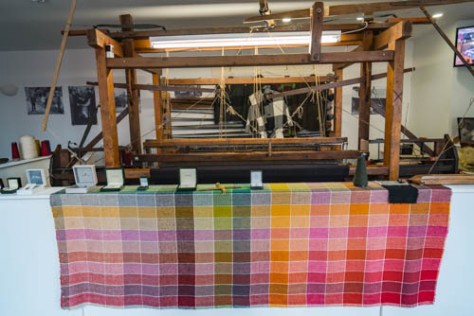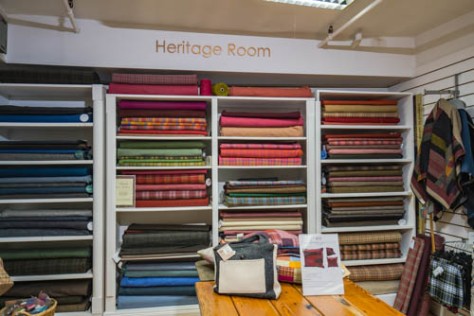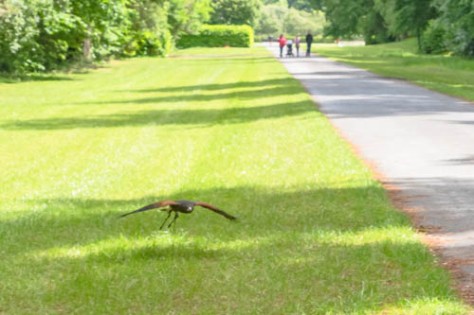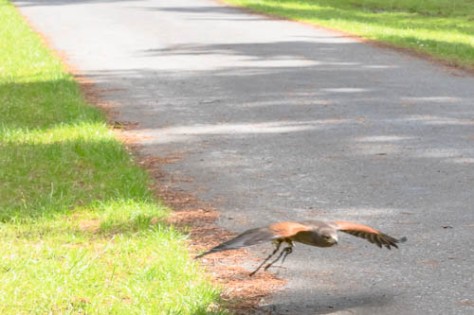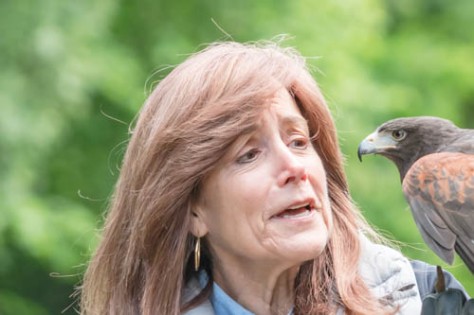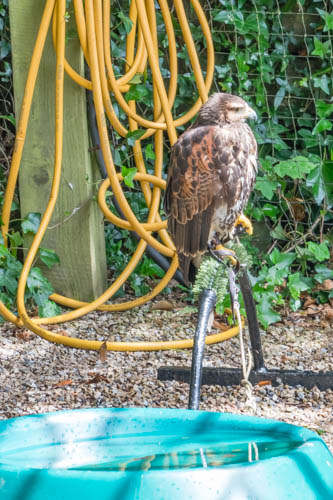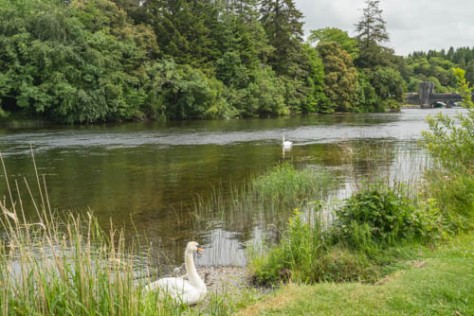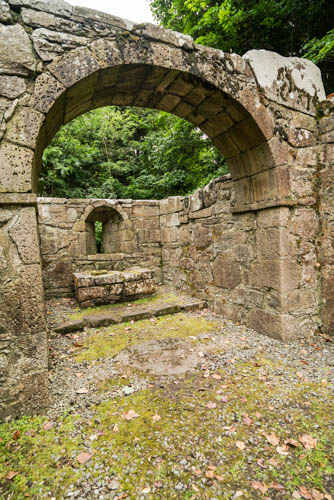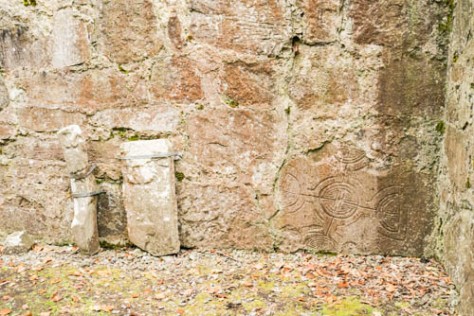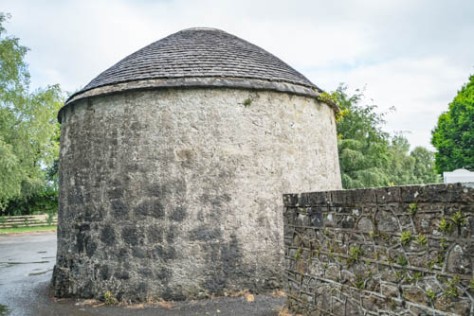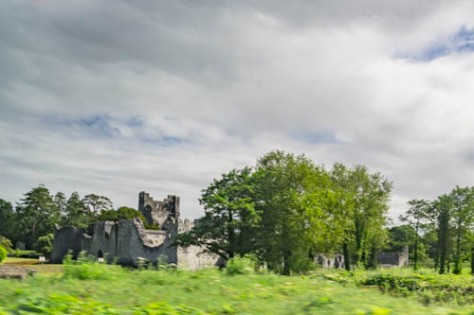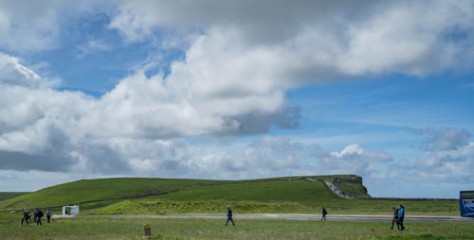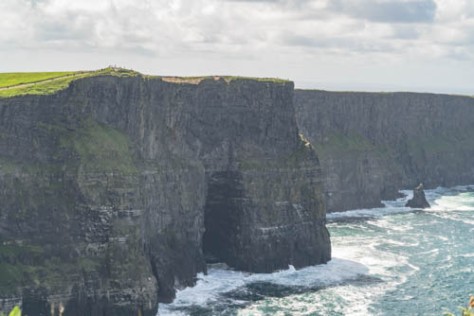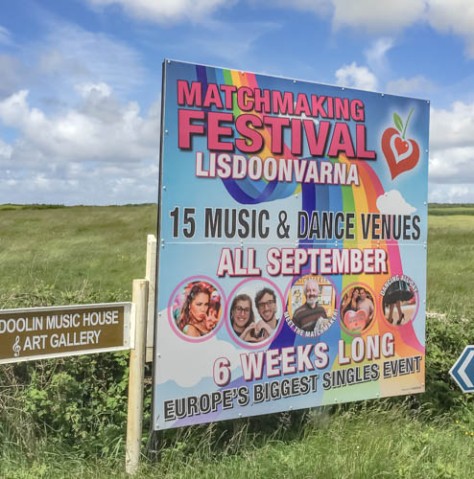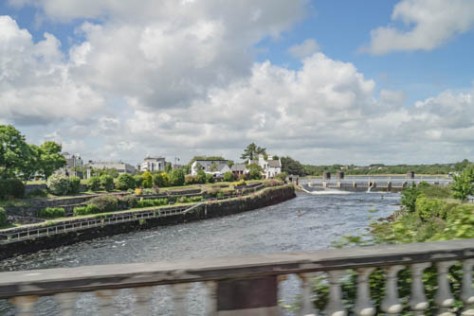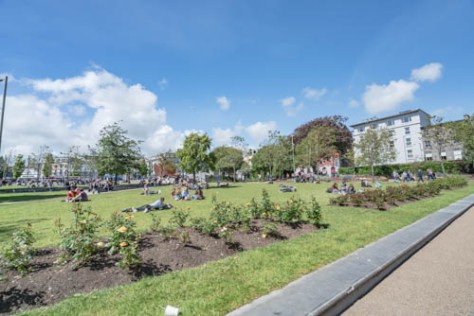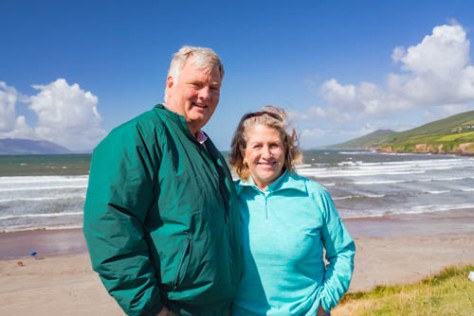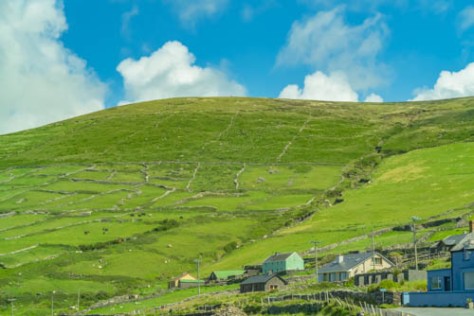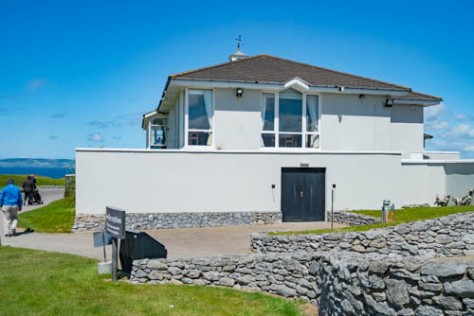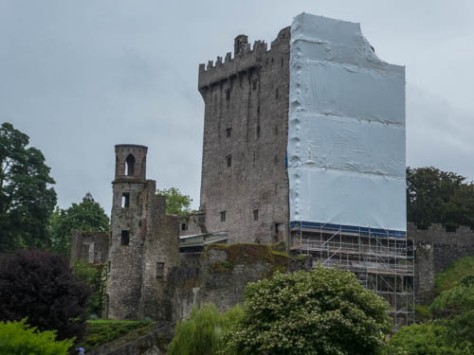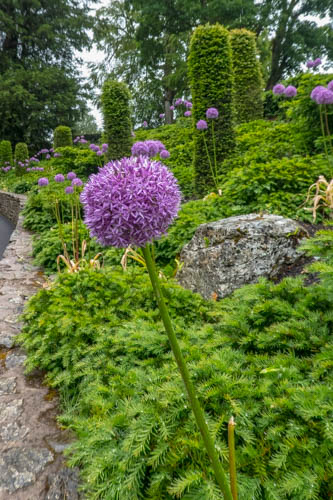June 8, 2017:
This morning we beat feet to the south, with an ultimate destination of the K Club in Kildare, just south of Dublin. However, our first stop for the day in just outside of Drogheda, to see the Unesco World Heritage Site of Newgrange–the location of a trio of immense Neolithic passage tombs. This historical site is known as Brú na Bóinne in the local Gaelic, and is located back in the Irish Republic along the Boyne River in County Meath. It is comprised of three different historical ruins, which are called Knowth, Dowth, and Newgrange.

Newgrange is the oldest site and was constructed about in about 3200 B.C. (5200 years ago). The Knowth and Dowth sites are a little newer, but all of them were constructed before the Great Pyramid in Egypt, and before Stonehenge in England. The passage tombs are large domed circular structures with an earthen roof built over internal stones lined up to create a passage to an internal chamber in which the cremated remains of ancestors could be laid until sunlight from the winter solstice crept down the 21 yard passage and lighted stone bowls in which the cremated remains were kept. In this way, the Neolithic people believed the souls of the dead were transported to the afterlife. Around the outside of each tomb is a collar of “kerb stones”, which are decorated with patterned carvings. Even now, over 5,000 years later, the sun still reaches the inner chamber at dawn on the winter solstice, and over 30,000 people sign up for a lottery each year which determines the lucky few able to witness this phenomenon in person. It being Ireland, though, and her highly fickle weather; even if you win the lottery, you might not see the sun that day!
All of the sites are accessed from the Visitors’ Center via small busses, but you have to buy a ticket to each site. Since access is controlled, you are given a timed ticket to access each site. Sadly, the tickets for Newgrange were sold out until 1:00 this afternoon (it was only about 10:00 when we arrived), so we elected to go to the Knowth site instead. But first, we learned more about these Neolithic people in the Visitors’ Center, which has exhibits based on their food, dress, and village structures, as well as two replica inner chambers: the one at Newgrange, and the entrance to Knowth.

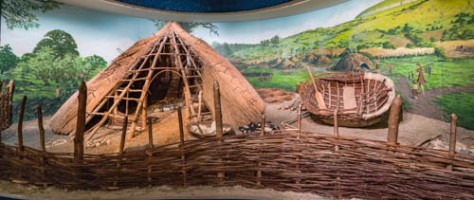
As we went out to the Knowth site, we were fortunate to meet up with a docent who was just beginning a lecture about the Knowth site. As I mentioned earlier, it was built later than Newgrange, having been constructed between about 2500-2000 B.C., so it is still older than The Great Pyramid at Giza. However, unlike the Newgrange site, this passage tomb was constructed with an east and west entrance which allowed the sun to enter on the equinoxes in spring and summer. Sadly, because the Knowth site was later used for settlement through the Middle Ages, and the later inhabitants constructed a hill fort and subterranean structures which may have been used as passages or for storage, the two passages no longer align for sunlight to enter on the equinoxes.



The Knowth passage tomb site is the largest of the three tombs, and is surrounded by 17 satellite tombs. It also has the largest collection of kerb stones encircling it, although some are missing and others damaged. However, outside the eastern entrance is a timber circle (think Stonehenge in wood), which is believed to have been constructed in the late Neolithic or early Iron Age (starting bout 2200-2000 B.C.), and the central tomb was believed to have already been in disuse by that time. As mentioned above, the site was abandoned and repurposed for human habitation beginning in the late Iron Age/early Christian period.
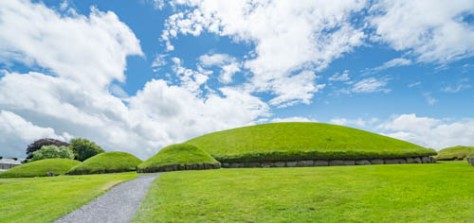


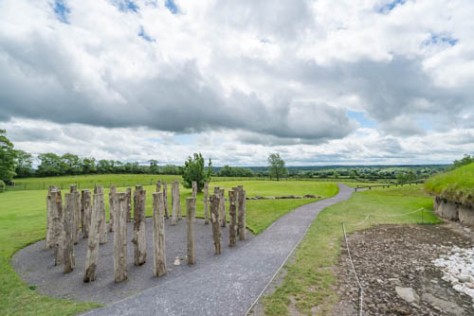
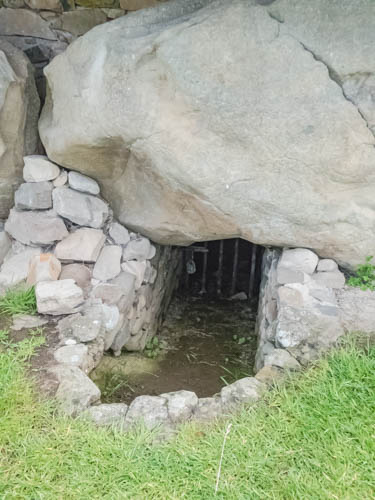

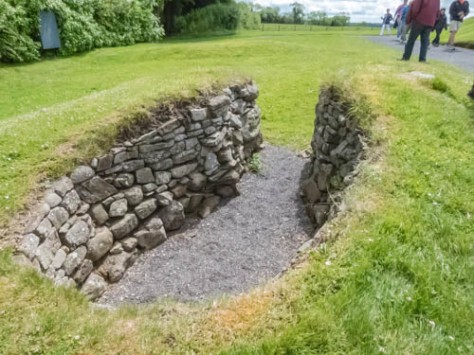
The kerb stones have really simple, but pretty carvings on them, and are more varied than those at Newgrange. Interestingly, one of the most common patterns is that of a spiral, which we have seen in other cultures (notably the Incan and Mayan), as well as some other cultures where it depicts the Earth Mother, and fertility or the circle of Life. One other interesting fact about these stones is that they were originally installed with the carving facing inward, in a style known as “hidden art”. Upon closer inspection, we could also see numerous “sand martins” (we call them bank sparrows in America), who had built nests in the grass edge right above the kerb stones.



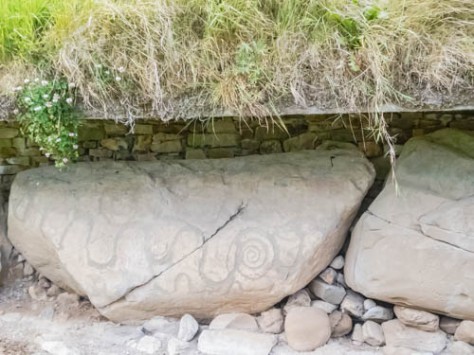
We also climbed to the top of the tomb, from which you could see all over the Boyne Valley. You could also see the Newgrange site in the distance, as well as the ruins of Mellifont Abbey, which was established by the Cistercians. Weren’t they just the busy little religious order?!!!!




We then decided to beat feet directly to the K Club in Kildare, as our lodgings have been upgraded, so we will be staying in the mansion known as Straffan House, located on the property. Sadly, we will also be bidding farewell to Dermott, but after nearly two weeks with all of us, I imagine he’ll be glad to sleep in his own bed and reacquaint himself with his wife!
We were treated like royalty upon arrival and driven to the remote property where Straffan House is located. The house is the private resident of Sir Smurfit, and was designed to look like the original Straffan House, which became the Kildare Hotel, now known as the K Club. The Smurfits were among the original founders of the K Club, and now own it outright. The new Straffan House is now available for lease to large groups at an astronomical cost, but I guess when it wasn’t rented (or being used by the Smurfit family), it serves as a kind of overflow accommodations.This is what greeted us as we arrived.







I had stayed at the K Club about 10 years ago on a business trip to meet with my company’s London and Irish insurance brokers, and I had treasured my memories of this grand old place. As you can see, Straffan House is a complete luxury showcase, complete with its own butler (named Patrick), movie theatre, gym, spa and pool, and golf carts provided for getting around the property. However, this is when reality set in.






I will preface these comments by saying that I am about to whine about what are clearly “FIRST WORLD PROBLEMS”, and I recognize that (and gave some thought to not mentioning any of this, but decided to leave you readers with an accurate account of our good stroke of fortune turned bad). After Patrick showed us to our rooms, we noticed that the rooms themselves, although nice, were certainly nothing to write home about, and ours was about as modest as my nephew’s room back home. More importantly, some of the rooms had no ensuite bathroom, and none of the bedrooms had air-conditioning. The whole house was about as hot as a sauna when we arrived, and although the pool room and gym downstairs apparently had air conditioning; since it was not working, those amenities were unusable. We had been told that whatever we wished in terms of food or drink could be provided at the house by merely letting Patrick know. The problem was that management had not authorized Patrick to do this and had not provisioned the house. Since the main hotel property is about 7-9 minutes away by car (and about 10 minutes directly across one of the golf courses by golf cart), that left us having to drive the carts to get anything we wanted or waiting forever for someone to come from the main hotel to drive us.
Since Jim and I wanted a cocktail after we settled in to celebrate the last night of the trip, we took 1 of the carts over to the main hotel. While that we cool (and we even saw a bunny playing on the greens), when we were ready to back to house to join our group for dinner, we got trapped at the main hotel by a huge thunderstorm deluge, and then had to wait some time to get back to Straffan House, and the vans had to make two trips to ferry us all to dinner.





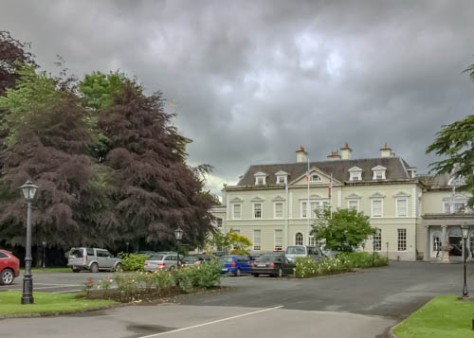
The crowning blow came the next morning, though. After arising early (after having sweated my way through the night because of no air conditioning and humidity outside) so we could eat breakfast and then leave for the airport, the chef who was supposed to show up and bring provisions and cook breakfast never arrived. Calls by Patrick to the main hotel didn’t produce any results, so Patrick found us a couple of tubs of yogurt and some fruit (probably his), and we had to leave. The conclusion was inescapable: we would have been better off staying in the main hotel.
While this was a less than stellar end to a great trip, Jim and I will still look back on our trip to Ireland as a wonderful exposure to a great company, and especially, its warm and welcoming people. Stay tuned, as our next adventure (starting in August) all take us through the Canadian Maritime provinces and on to, Greenland, Iceland, Norway and Sweden. Thanks for reading along!





